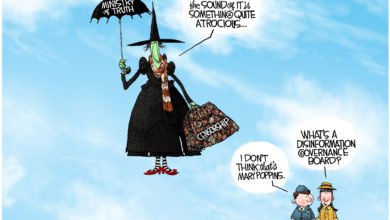Medal of Honor Monday: Army Capt. Eli Whiteley
Army Capt. Eli Whiteley was an academic interested in agriculture when World War II consumed the world, but he volunteered for the Army to do his part. In 1944, he led his platoon through a fierce battle in France that killed several Germans and captured dozens more. His leadership and courage despite intense wounds led him to earn the Medal of Honor.
Whiteley was born Dec. 10, 1913, and grew up on his family’s farm near Georgetown, Texas. After high school, Whiteley applied to the Agricultural and Mechanical College of Texas (now Texas A&M University). But, according to the Texas State Historical Association, he was told he needed better grades and more coursework.
Instead, Whiteley took odd jobs to earn money for school and eventually landed a position with the Agricultural Adjustment Administration, a new federal agency.
After six years of work, Whiteley reapplied for college at AMCT and was accepted. Majoring in agriculture, Whiteley took as many courses as he could year-round while working two jobs and participating in ROTC. He graduated in 1941 — in three years — with a Bachelor of Science degree in agronomy. However, since he graduated early, he failed to finish the required courses that would have led to a military commission.
Whiteley then moved to Raleigh, North Carolina, to start his master’s degree at North Carolina State College (now North Carolina State University). But then Pearl Harbor happened, and, according to the Texas State Historical Association, Whiteley volunteered his name to the draft board to be chosen during the next call-up. So, in April 1942, the 28-year-old joined the Army.
After basic training, Whiteley went to Infantry Officers Candidate School to earn his commission. He worked stateside training other recruits and soldiers until November 1944 when he was shipped to Europe as a rifle platoon leader assigned to Company L, 15th Infantry Regiment, 3rd Infantry Division. The unit was in France, where it had begun its push toward Germany.
There was bitter fighting along the way. During a fierce battle in Bennwihr, France, on Dec. 23, 1944, Whiteley’s company lost more than half of its men. As devastating as that was, it was about to get worse.
Victory At All Costs
On Dec. 27, 1944, then-1st Lt. Whiteley was leading his platoon in a brutal campaign that required the men to fight from house to house in the fortress town of Sigolsheim, France.
As he charged alone into a house off a fire-laden street, he suffered serious wounds to his left arm and shoulder, but he still managed to take out the two Germans occupants. Using grenades, he then charged into the next house, killing two more while helping his platoon capture 11 enemy soldiers.
House by house, Whiteley led his platoon as it cleared hostile troops from buildings along the street. By the time they reached a Nazi stronghold, Whiteley’s left arm was completely useless. But he pushed forward anyway, blasting out a wall with a bazooka before charging through a hail of gunfire that followed. He had to wedge his submachine gun under his uninjured arm as he ran into the house through the blast hole, killing five enemy soldiers and forcing the remaining 12 to surrender.
Whiteley continued his attack and was again critically wounded when one of his eyes was pierced by a shell fragment. Despite the intense pain, he yelled for his men to follow him into the next house.
He stayed in the fight as the head of his platoon until medical personnel forced him to evacuate.
All in all, Whiteley’s courage under intense fire led to the death of nine Germans and the capture of 23 more. His leadership during the battle led to an Allied victory that shattered any remaining enemy resistance in the area.
Recovery and Honors
Whitely was evacuated to get medical help. After three months, he was sent back to the U.S. for treatment, which took 18 months and included plastic surgeries and an artificial eye. While he was still in recovery, he was flown to Washington, D.C.
On Aug. 23, 1945, he received the Medal of Honor from President Harry S. Truman during a White House ceremony. His mother and one brother were able to attend; he was also promoted to captain.
Afterward, he returned to the hospital for treatment. It took 18 months for Whiteley to recover. In May 1946, he was discharged from the Army.
Back to Academics
A distinguished war hero, Whiteley returned to North Carolina and finished his master’s degree in 1949. That same year, he married a woman named Anna. The pair had two sons and three daughters.
After earning his degree, Whiteley accepted a job teaching agronomy at his alma mater, the Agricultural and Mechanical College of Texas. He worked there for 30 years as a teacher. He also researched plants and soil management, which helped him earn him a doctorate in soil physics in 1959. Whiteley retired in 1979 and was named a professor emeritus in the Department of Soil and Crop Sciences.
Whiteley remained active in the military community. He was once a post commander at his local American Legion, and he served for a while as the president of the Congressional Medal of Honor Society.
Whiteley died of a heart attack on Dec. 2, 1986. He was buried with full military honors at College Station City Cemetery.
Whiteley’s name lives on at Texas A&M. The Eli Whiteley Memorial Medal of Honor Park was named in his honor. A dormitory was also dedicated in his name. Whiteley’s Medal of Honor is also on loan to the Sam Houston Sanders Corps of Cadets Center on the university’s campus, where it’s currently on display.
This article is part of a weekly series called “Medal of Honor Monday,” in which we highlight one of the more than 3,500 Medal of Honor recipients who have earned the U.S. military’s highest medal for valor.
Source: Department of Defense
Content created by Conservative Daily News is available for re-publication without charge under the Creative Commons license. Visit our syndication page for details.




